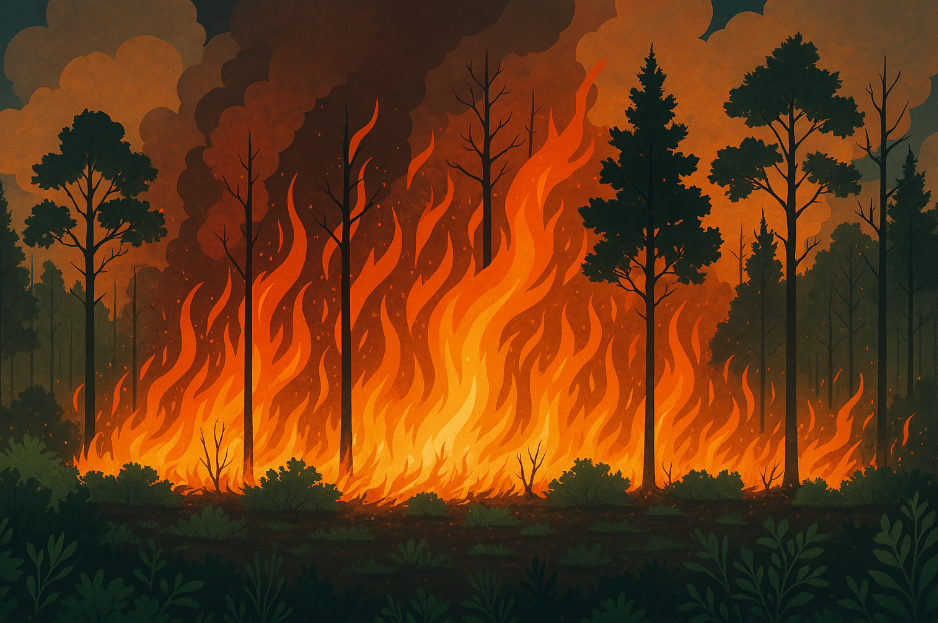
Courses and Workshops

Online: RX-310 Introduction to Fire Effects
Learn how fire interacts with ecosystems and how we can monitor, understand, and manage its effects to support resilient landscapes.

Fire Effects Monitoring Workshop
Fire effects monitoring is used to examine ecological responses to fire over time and space. It is a critical piece in fire management planning to document the results, measure those results against future treatments, evaluate successes (and failures) and analyze the measurements against ecological, cultural, social and traditional values. Monitoring supports the story you want to share. This course helps you get your monitoring program started as you learn what and how to monitor.

Williams Lake: S-390 Intermediate Fire Behaviour
After instructing S390 Intermediate Fire Behaviour with BCWS for eight years, I’ve taken the course and updated it for a wildland fire response, controlled fire and fuels management audiences. You will gain more confidence with the Red Book and prescription writing. This version of S390 was adapted to meet the needs of fire suppression, prescribed fire, fuels management and FireSmart so prescriptions and plans are designed with a professional level of fire behaviour.
At successful completion of this course, participants will have met the following learning outcomes under the Canadian Forest Fire Behaviour Prediction (FBP) System:
1. Identify and describe the characteristics of fuels, weather, and topography that influence fire behaviour.
2. Describe the interaction of fuels, weather, and topography on fire behaviour in wildfire, prescribed fire, fuels management and safety.
3. Interpret, communicate, apply, and document fire behaviour and weather information.
4. Demonstrate the use of weather tools and Red Book to determine primary outputs and fire behaviour predictions.
5. Recognize the FBP Fuel Type Descriptions and unique fire behaviour and effects for each type.
6. Apply the information to develop safe and effective fire management decisions, e.g., fuels management, prescribed fire, suppression.
Two days. Mininum of 14 students up to a maximum of 20. This course comes with a Red Book and Student Workbook.


Cranbrook: S-390 Intermediate Fire Behaviour
In partnership with Ktunaxa Nation, two fire courses will be offered with priority given to the Indigenous community.
Funding is available for Inigenous participants by contacting KNC Education and Employment at KNCEE@ktunaxa.org or at 250-489-2464.
Fill out “Sign Up Form” to enroll
THIS COURSE IS SOLD OUT. Use the “Sign Up Form” below to get on the waiting list.
Enrollment will begin again on May 01 after confirmations are solidified.
After instructing S390 Intermediate Fire Behaviour with BCWS for eight years, I’ve taken the course and updated it for a wildland fire response, controlled fire and fuels management audiences. You will gain more confidence with the Red Book and prescription writing. This version of S390 was adapted to meet the needs of fire suppression, prescribed fire, fuels management and FireSmart so prescriptions and plans are designed with a professional level of fire behaviour.
At successful completion of this course, participants will have met the following learning outcomes under the Canadian Forest Fire Behaviour Prediction (FBP) System:
1. Identify and describe the characteristics of fuels, weather, and topography that influence fire behaviour.
2. Describe the interaction of fuels, weather, and topography on fire behaviour in wildfire, prescribed fire, fuels management and safety.
3. Interpret, communicate, apply, and document fire behaviour and weather information.
4. Demonstrate the use of weather tools and Red Book to determine primary outputs and fire behaviour predictions.
5. Recognize the FBP Fuel Type Descriptions and unique fire behaviour and effects for each type.
6. Apply the information to develop safe and effective fire management decisions, e.g., fuels management, prescribed fire, suppression.
Two days. Minimum of 12 to a maximum 20 students. Course comes with a Red Book and Student Workbook.
